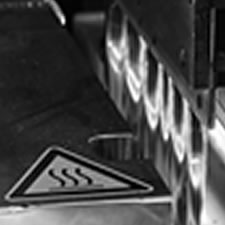
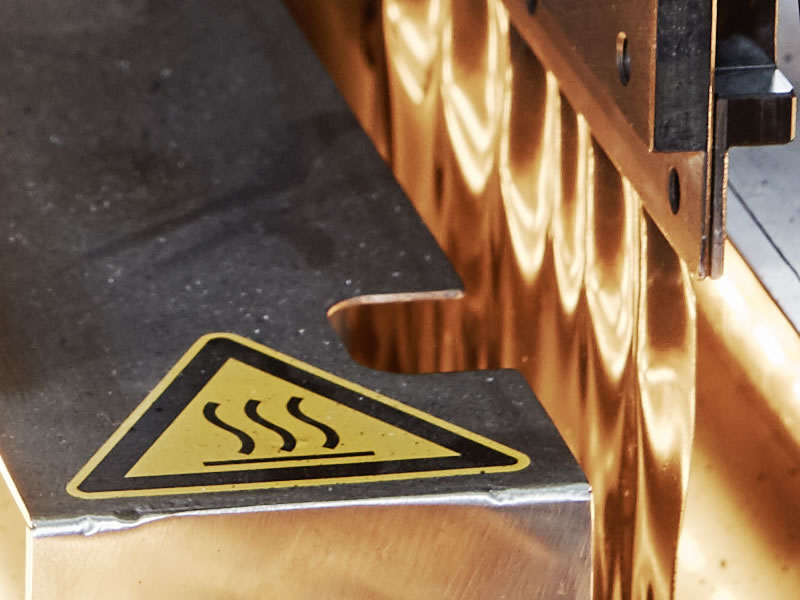
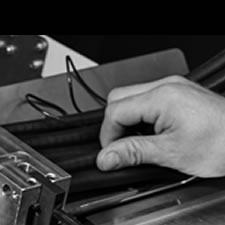
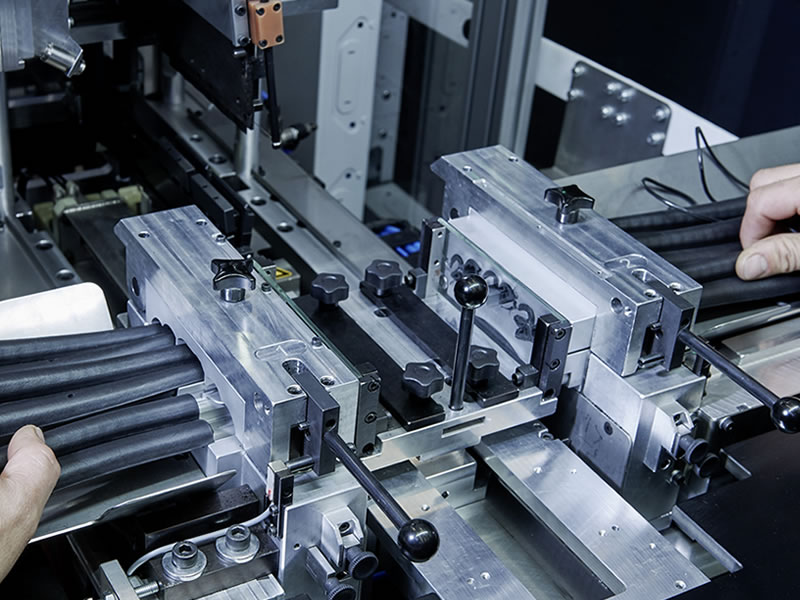
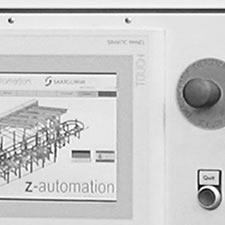
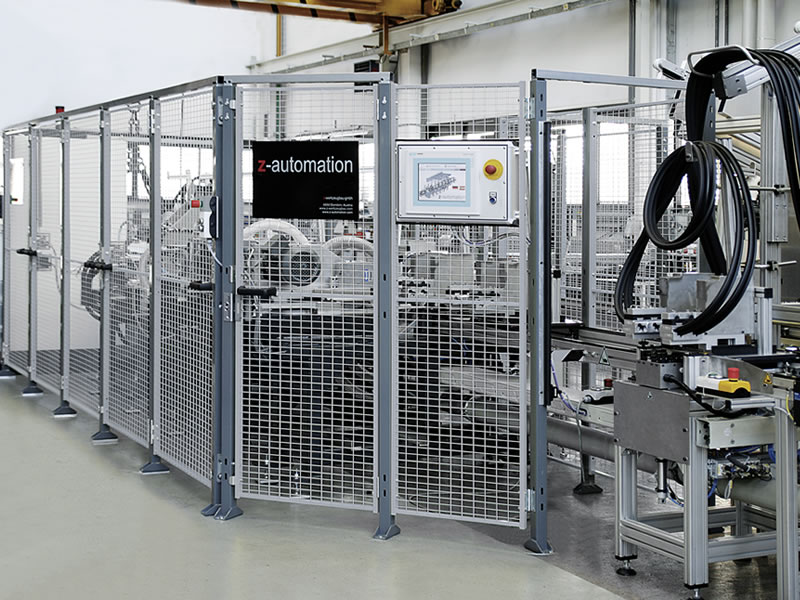
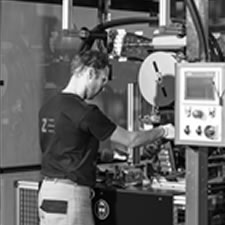
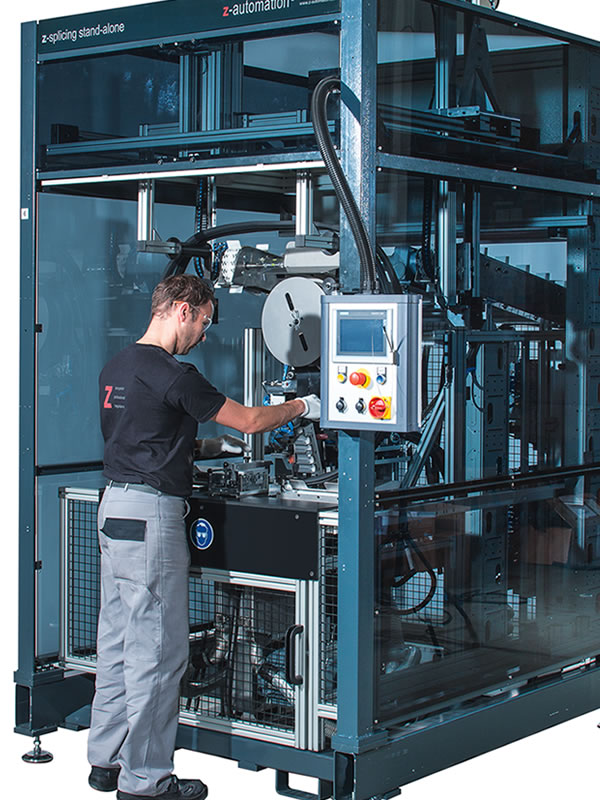
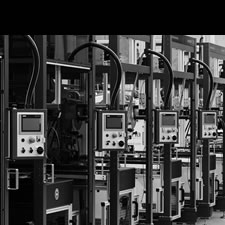
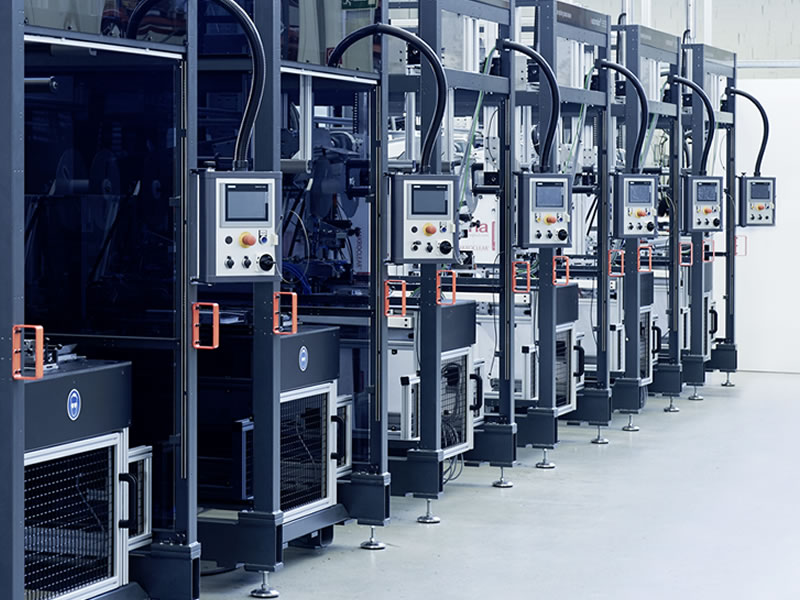
z-splicing technology for the splicing of sealing rings
z-automation offers two universal and flexible solutions for PE-splicing
- z-inline splicing with direct coupling to the extrusion line provides process reliability and the highest degree of automation
- z-splicing stand-alone for a decoupled splicing process
Both solutions use identical modules for the processing of profile ends and splicing, and include
- the integrated face-grinding of profile ends to ensure capable gluing and the lowest possible scrap rate
- the gluing process – it is controlled in a reproducible manner and is therefore very stable, which guarantees optimum quality without manual readjustment, even with changing external conditions such as temperature fluctuations or drafts
- integrated hole punching of the splicing foil for improved water and air management in tube areas
- ability of processing most profiles with butyl
- turnkey solutions, including suction units
- highest flexibility for the production of various products through standardized and easily exchangeable clamping tools
Sustainable investment
Using the quick-tool-change interface, our universal systems can be equipped with product-specific tool sets for different profile cross sections within a few minutes.
Maintenance and service
To guarantee smooth operation, z-automation relies on proven systems, the use of commonly available parts, detailed operating and maintenance manuals as well as remote maintenance via online remote control.
z-inline splicing
Highest degree of automation and maximum process reliability
With z-inline-splicing, the processing and splicing of the sealing profiles is directly coupled to the extrusion line. Automated loading of profiles from the extrusion line onto a multiple workpiece carrier. Profile transport to the operator-controlled loading station with optional profile turning unit to place profiles in the ideal processing position. Manual loading of the profiles into the clamping tools. Automated grinding of the profile ends to guarantee independence from the profile raw cut, automated joining of the profile ends via PE-splicing, automated removal of foil rests. The operator unloads the profiles and puts them into the transport boxes.
Thanks to the high degree of automation of z-inline-splicing, the sealing rings require minimum operator involvement and no further processing steps before they can be dispatched. The process includes no manual processing steps. The compact layout of z-inline-splicing avoids material buffers before, between and after the splicing process.
Typical cycle time
The typical cycle time for one sealing ring is 10 seconds. This leads to a maximum extrusion rate of up to 25 m/min. Our high performance model even reaches >35 m/min.
Find more information in our z-inline-splicing product brochure.
z-splicing stand-alone
for decoupled splicing
z-splicing stand alone is a system in which the raw profiles are manually loaded into the system, with optional profile transport to the operator from the back of the system.
Normally two profile rings are spliced in one cycle. Ideally one operator handles two systems alternately.
Important option: Automated grinding of the profile ends before splicing guarantees independence from the raw cut, thus adding process capability. This is followed by integrated joining of the profile ends via PE-splicing. The operator unloads the sealing rings and manually removes foil rests.
Typical cycle time
The process time for grinding the profile ends is 10 seconds, while automated splicing takes 20 seconds. Manual unloading, the removal of foil rests and loading takes another 30 seconds. If two systems are operated alternately, this equates to a typical overall cycle time of 15 seconds per sealing ring.
Find more information in our z-splicing stand-alone product brochure.
Your benefits
- process reliability for PE-splicing with lowest possible scrap rate
- splice with maximum optical and technical quality
- flexible universal systems which can be easily set up with product-specific tool sets
How can we help you? Contact










